until Abu Dhabi Autonomous Racing League

Romain Grosjean ticked over 50 starts in IndyCar last weekend, and it’s been the most explosive half-century you could possibly imagine.
Having rebounded from his fiery Bahrain Formula 1 crash to become the darling of the IndyCar fans and media, before experiencing a fall from grace in a disappointing two-year spell at Andretti where he swung anywhere from race winner-elect to anonymous, 'the Phoenix' has packed so much into just three-and-a-bit seasons.
It seems a great opportunity to look back on a career that, whatever you say about him, has already made Grosjean one of the most interesting and valuable characters in the IndyCar paddock.
The Phoenix on pole
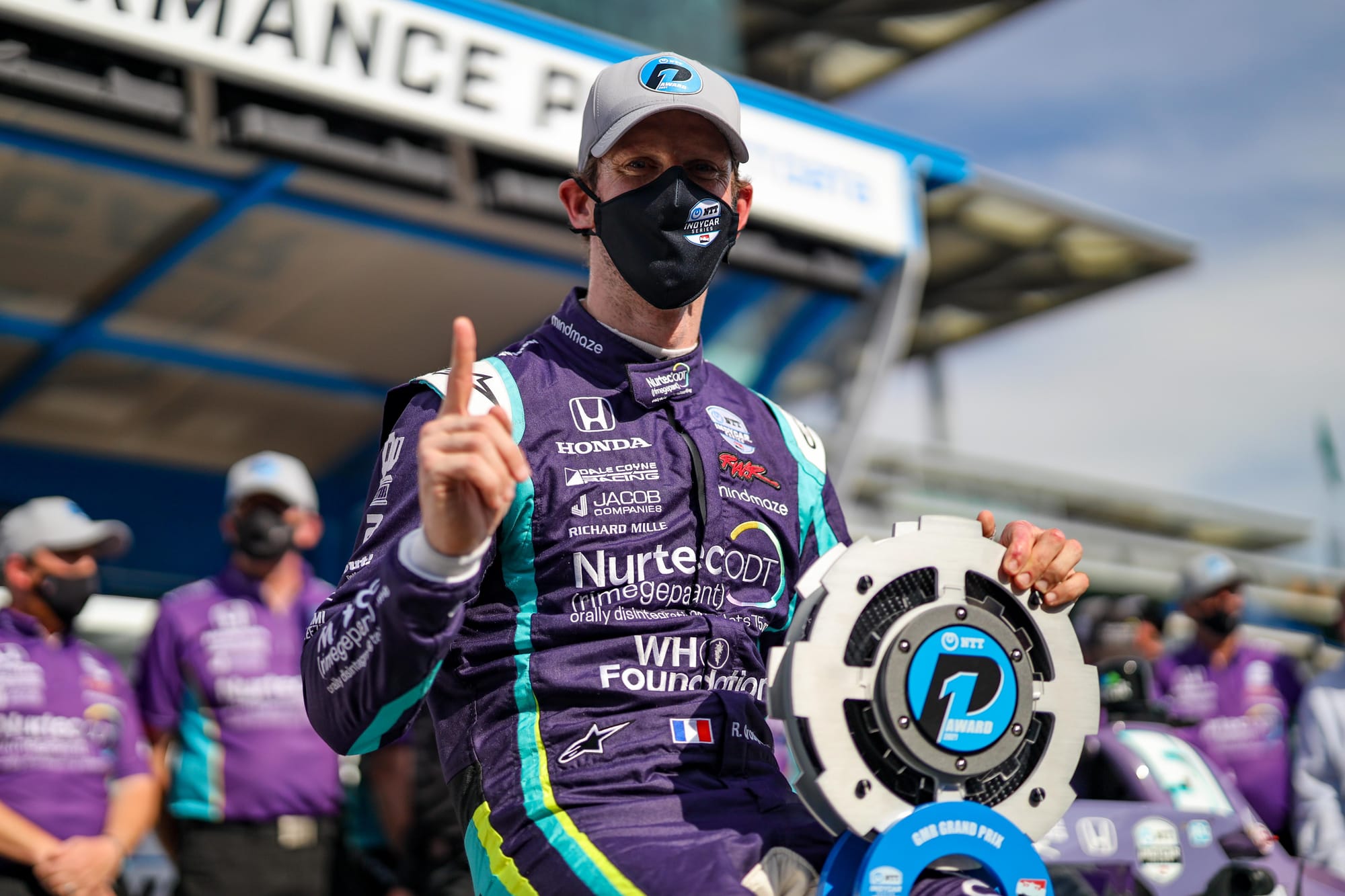
You have to remember the context with which Grosjean entered IndyCar, off the back of a horrendous, fiery crash in what ended up being his final F1 race in 2020 for Haas that prompted very tough questions about his racing future.
Haas ended up not sponsoring his IndyCar entry in the move after the crash, and his family had to discuss whether Grosjean would do ovals, which he inevitably avoided for most of his first year.
Given all of that, no one expected him to be on pole for his third race.
He’d started the season with an “emotional” return to race conditions for the first time in almost five months since his Bahrain crash, one that caused him intense injuries that were still visible months later. He started 2021 with significant burns on his hands, in a formula that has a hot cockpit and no power-steering.
At that season opener at Barber he qualified seventh and finished 10th in a typically strategy-heavy race at the track, and followed that with 13th in St Petersburg on his IndyCar street circuit debut, which he called his hardest physical challenge.
Still, despite those strong performances, a pole and podium at the Indy GP probably felt out of reach even for this talent just three races in - not just because of his 10-year wait for a pole in F1 but also because such results had been a rarity for his Coyne team in the years preceding, too.
He described the pole as making him feel “like being alive again”, the significance of which - after his F1 crash - was lost on no one.
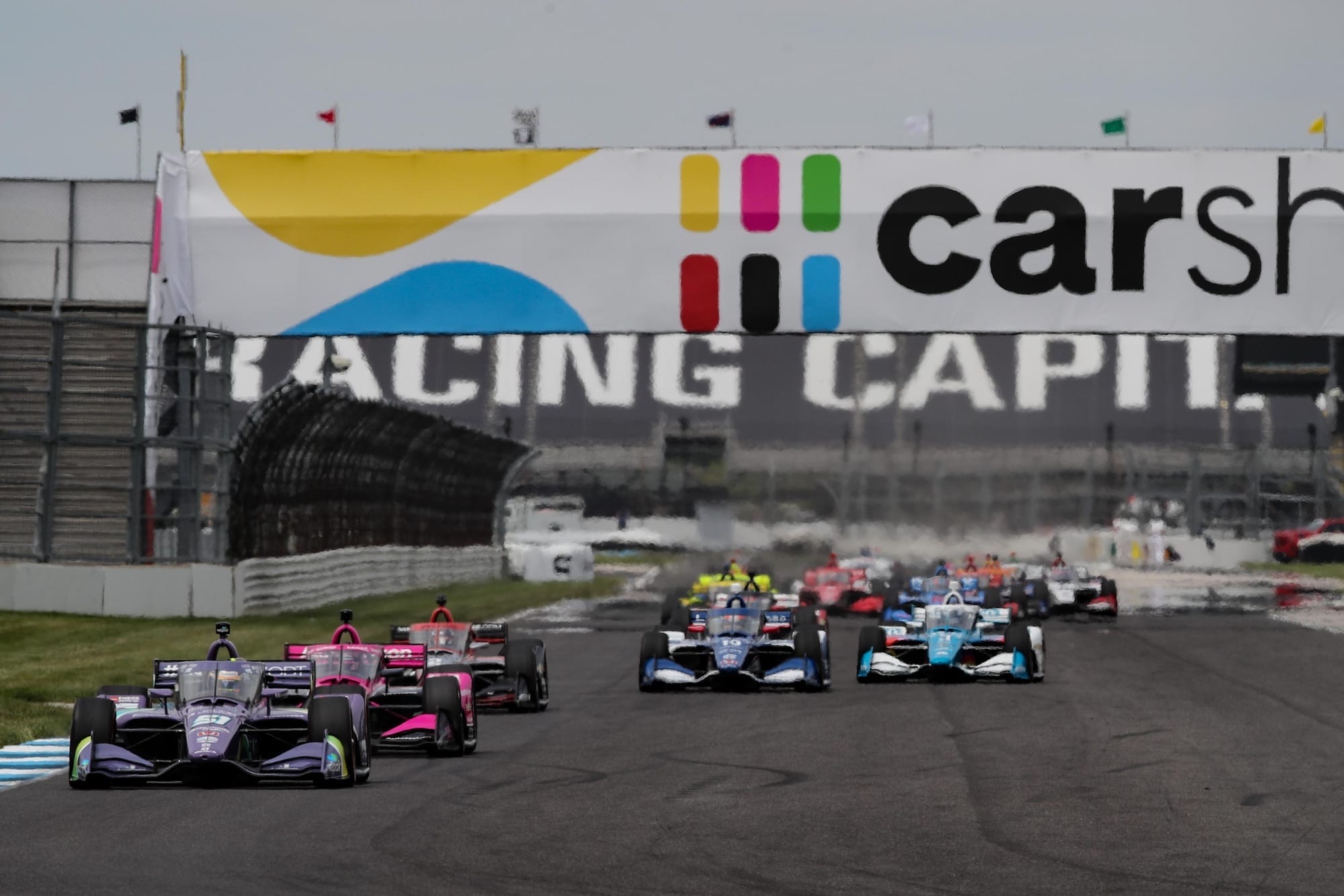
It was hard for anyone in IndyCar not to be a Grosjean fan in the days following. He reckoned blue flags held him up during a crucial phase of the race, but finishing second to Rinus VeeKay was still a strong result.
He'd be the talk of IndyCar in the days and months, alongside the emergence of Alex Palou as a title contender in his maiden Ganassi season.
Overtakes, dizzying popularity and ovals
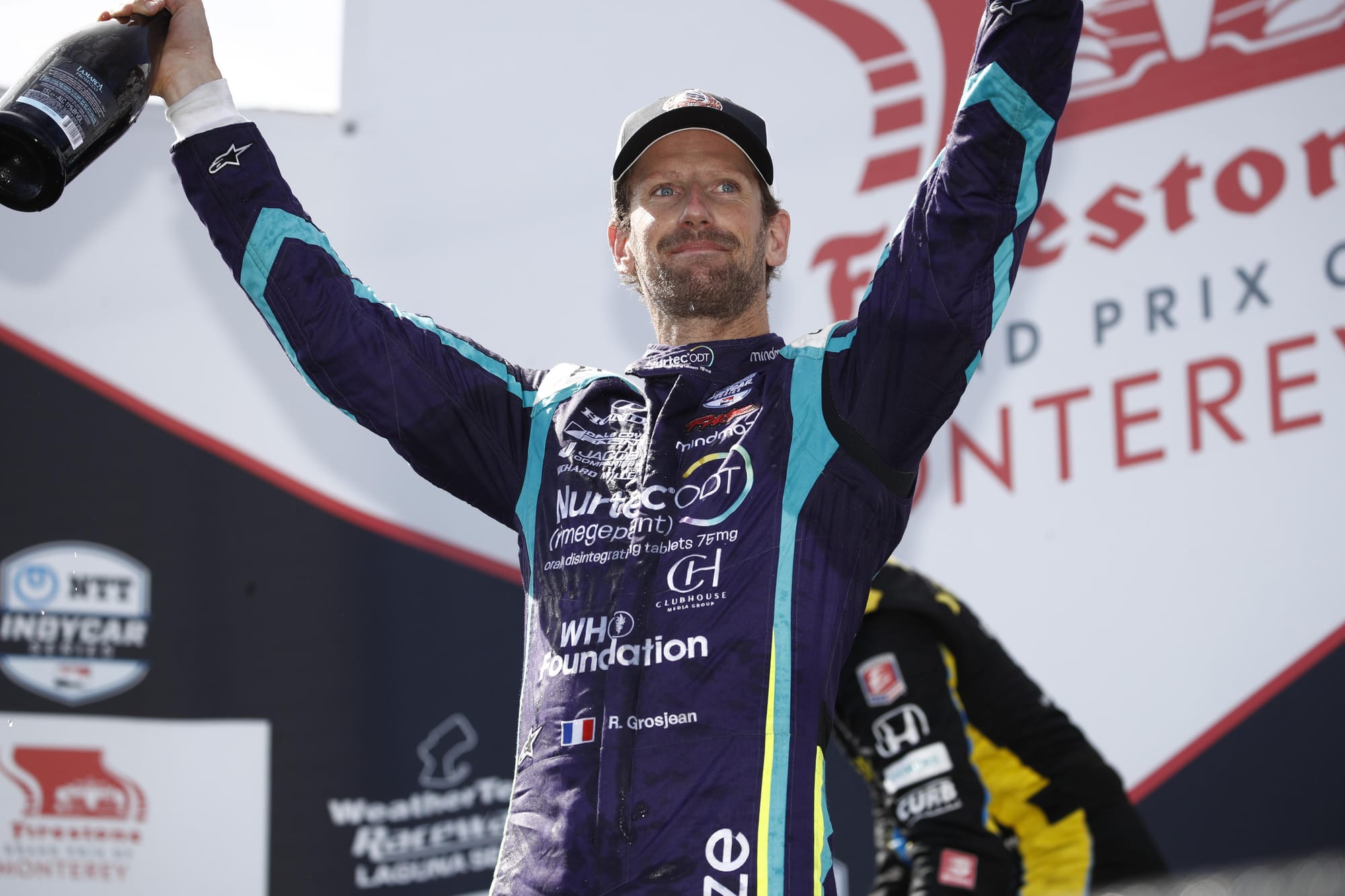
By the end of 2021, Grosjean was voted the series’ most popular driver, had embraced his new ‘Phoenix’ nickname, and had been given fire department T-shirts by a new legion of fans at tracks.
Through that season, Grosjean became a more and more complete IndyCar driver, improving his in- and out-laps, bettering his restarts and, by June, he was showing what a mastery of the brakes he’d achieved by making some incredible overtakes at one of North America’s most storied venues, Road America - scoring fifth despite a poor pitstop that dropped him to 13th.
He called it the “funnest race ever in my career” to that point.
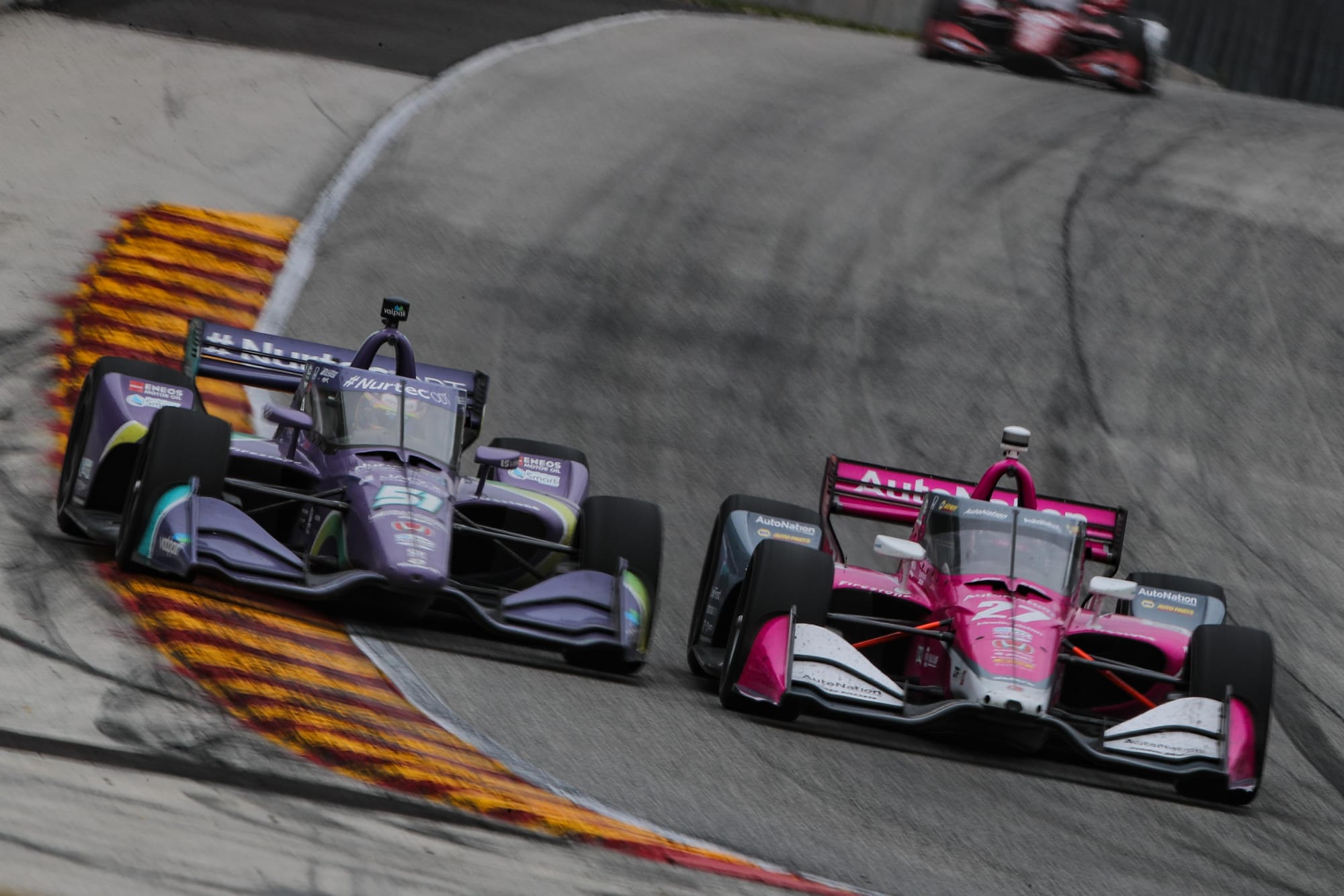
He missed three oval races, and if you averaged his points total out across the season he could have finished 10th in the championship, so it was no surprise he got a big move to Andretti where he felt like a good fit with a team owner, Michael Andretti, who was very similar to Grosjean in some ways.
A key part of that move was being open to doing the ovals. Grosjean made his debut at Gateway in the second half of 2021 and he immediately looked at home on them. He may have been on the ragged edge in that debut but it was exciting to watch and he’s impressed regularly since.
The beginning of the fall
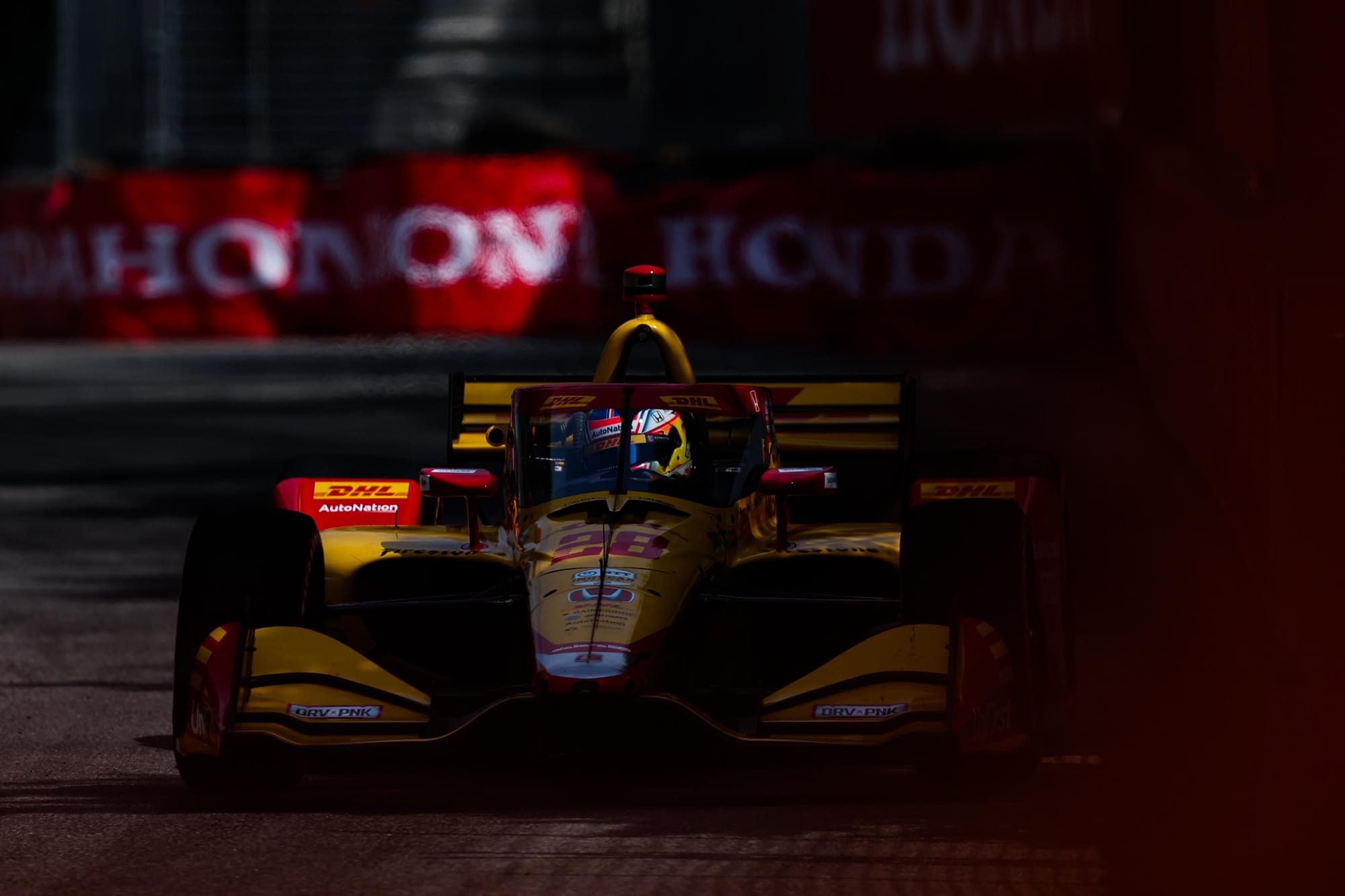
A year on from his debut where he was welcomed by fans and drivers alike, Grosjean was being called a “punk” and his so called reputation from Europe was being dragged into the firing line, on this occasion by Graham Rahal - who Grosjean crashed into somewhat sloppily at Barber.
Late drama 👀#HIGPA | #IndyCar
— The Race (@wearetherace) May 1, 2022
pic.twitter.com/QNxuJShaKR
Grosjean had already been called reckless by Takuma Sato after a practice crash, and it set about a string of results which you felt were self-fulfilling prophecies.
Grosjean was annoyed at his results and combative on-track fighting for every point, and his peers perhaps weren’t giving him the same breathing room or benefit of the doubt they may have done in year one amid his fairytale start.
Inevitably, his rivals saw him as more of a threat as a more established driver in a bigger team.
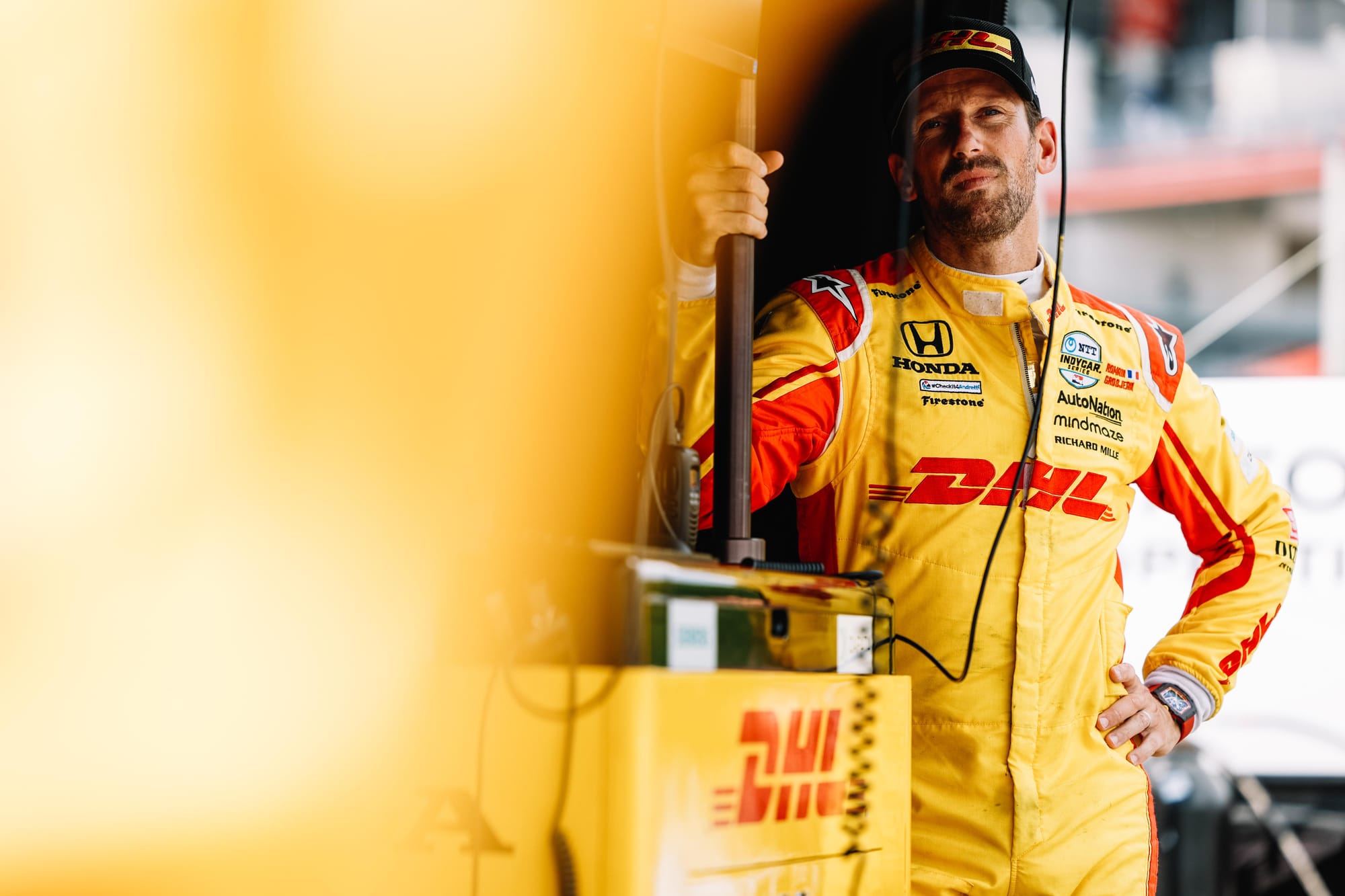
He ended 2022 with a worse points-per-race score than in 2021, and while there was plenty of bad luck and circumstances out of his control at what was a team with its own internal problems - see Alexander Rossi and Grosjean falling out at Mid-Ohio in July - it was still an unacceptable result in what was supposed to be a promotion from Coyne.
The saving grace was perhaps that Andretti itself didn’t look ready to give any of its drivers a package to challenge for a title, and Grosjean showed flashes of pace through the period enough to hint at what was possible.
What could have been
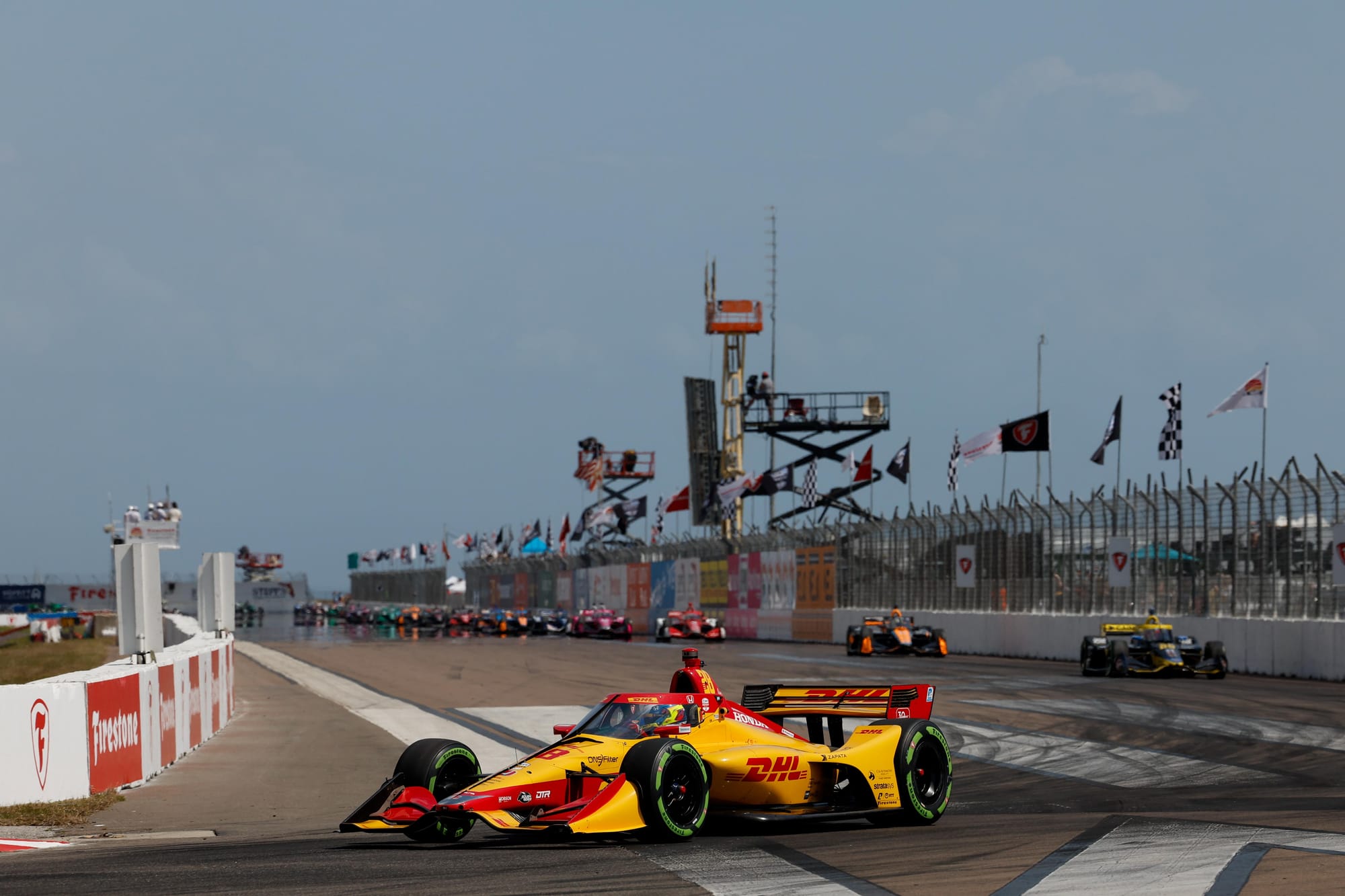
I’ll die on the hill that Grosjean could and should have been a title contender in 2023. As much as anyone could have been a distant contender to Alex Palou, anyway.
It started at St Petersburg in the first race of the season where he took pole position and was set for his first IndyCar win before being taken out by Scott McLaughlin. At the next race, Texas, he crashed out of a top five where he should have placed his car better but wasn’t given much time to react as David Malukas took the air off the front of Grosjean’s car.
Not the way @RGrosjean wanted his day to end. #INDYCAR
— INDYCAR on NBC (@IndyCaronNBC) April 2, 2023
A look at the race-ending caution. pic.twitter.com/QwC90KQnXL
But then he took second at Long Beach and second at Barber. Without the first two races falling apart he would have had epic momentum.
He was 11th at the Indy GP and all the noise was that Andretti and Grosjean wanted to continue.
But after a contract offer which was not countersigned by Andretti according to paddock sources, Grosjean entered arbitration at the end of the season, believing he should have had that contract honoured.
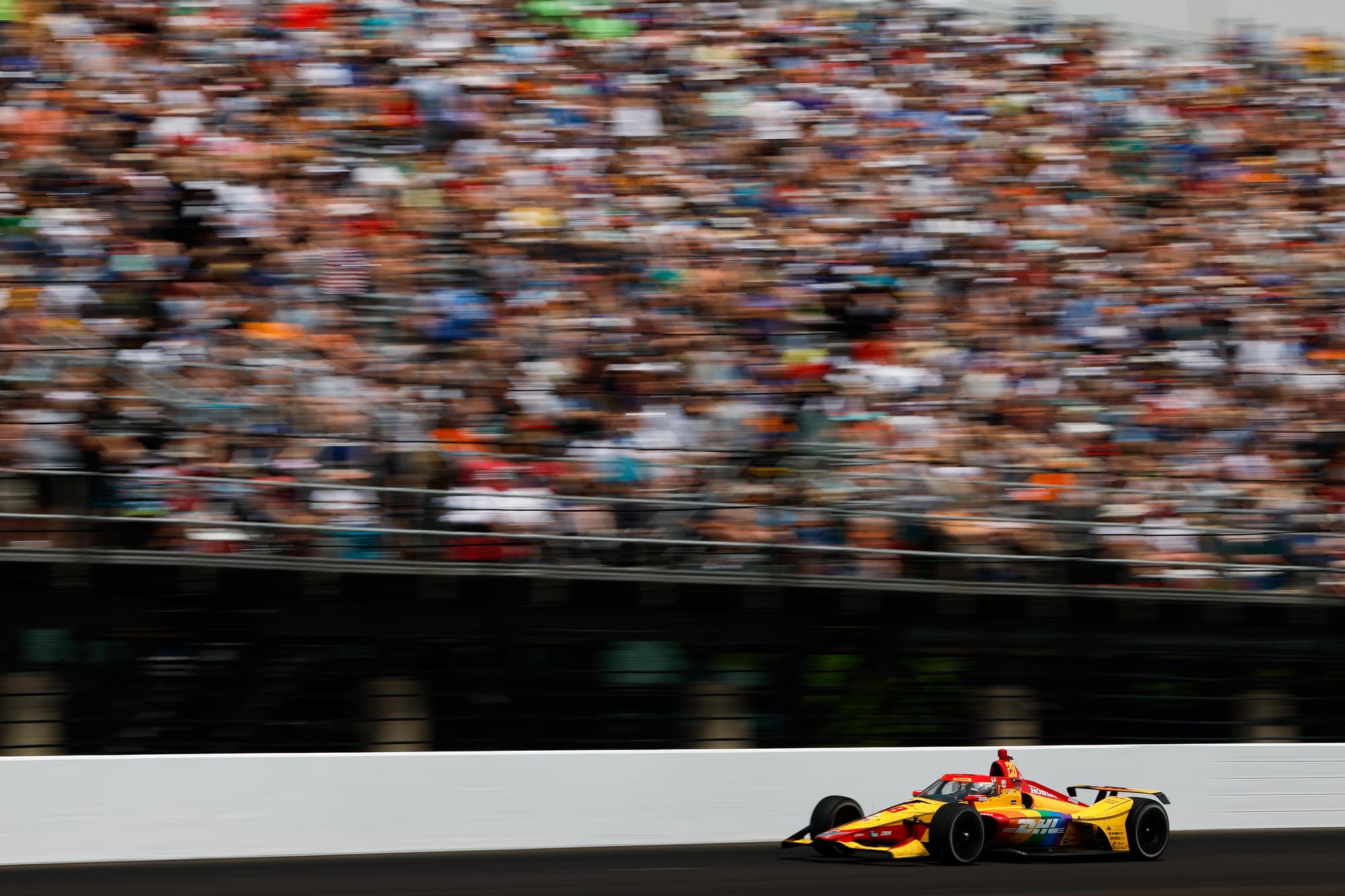
He struggled for form the rest of the year after the Indy 500 where he crashed, doing so again at Detroit (with suspension trouble) and Toronto (the steering wheel came out of his hands), and otherwise had a second half of the season littered with 11th, 12th and 13th-type finishes.
Ultimately, Andretti had decided by September it wasn't keeping Grosjean and would downsize to three cars in 2024, leaving Grosjean to find a seat elsewhere. He was linked to a Coyne return but ended up in Callum Ilott's seat...
A new chapter
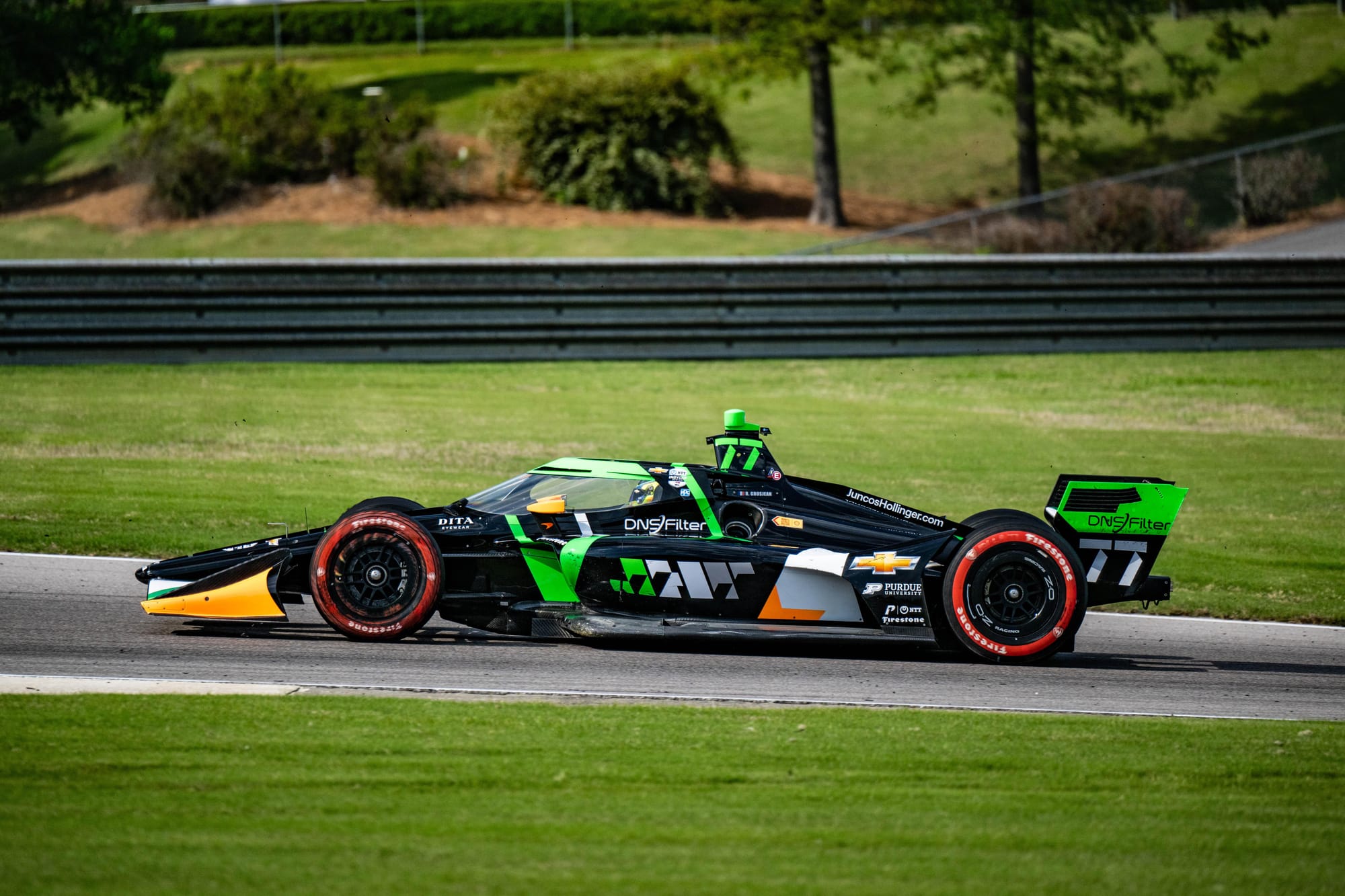
Given his success at Coyne, going back to a small team like Juncos Hollinger Racing should be a great move for Grosjean where he can find his feet again after two tough years in a bigger team.
Out of the limelight, he should be able to shine and has already shown signs of that being the case.
He did take out Linus Lundqvist in the St Petersburg race but had qualified well, was himself taken out at the non-points Thermal event, bagged eighth at Long Beach for a first top 10 with Juncos and then did his best to avoid trouble when others raced him very aggressively at Barber, where he came home 12th.
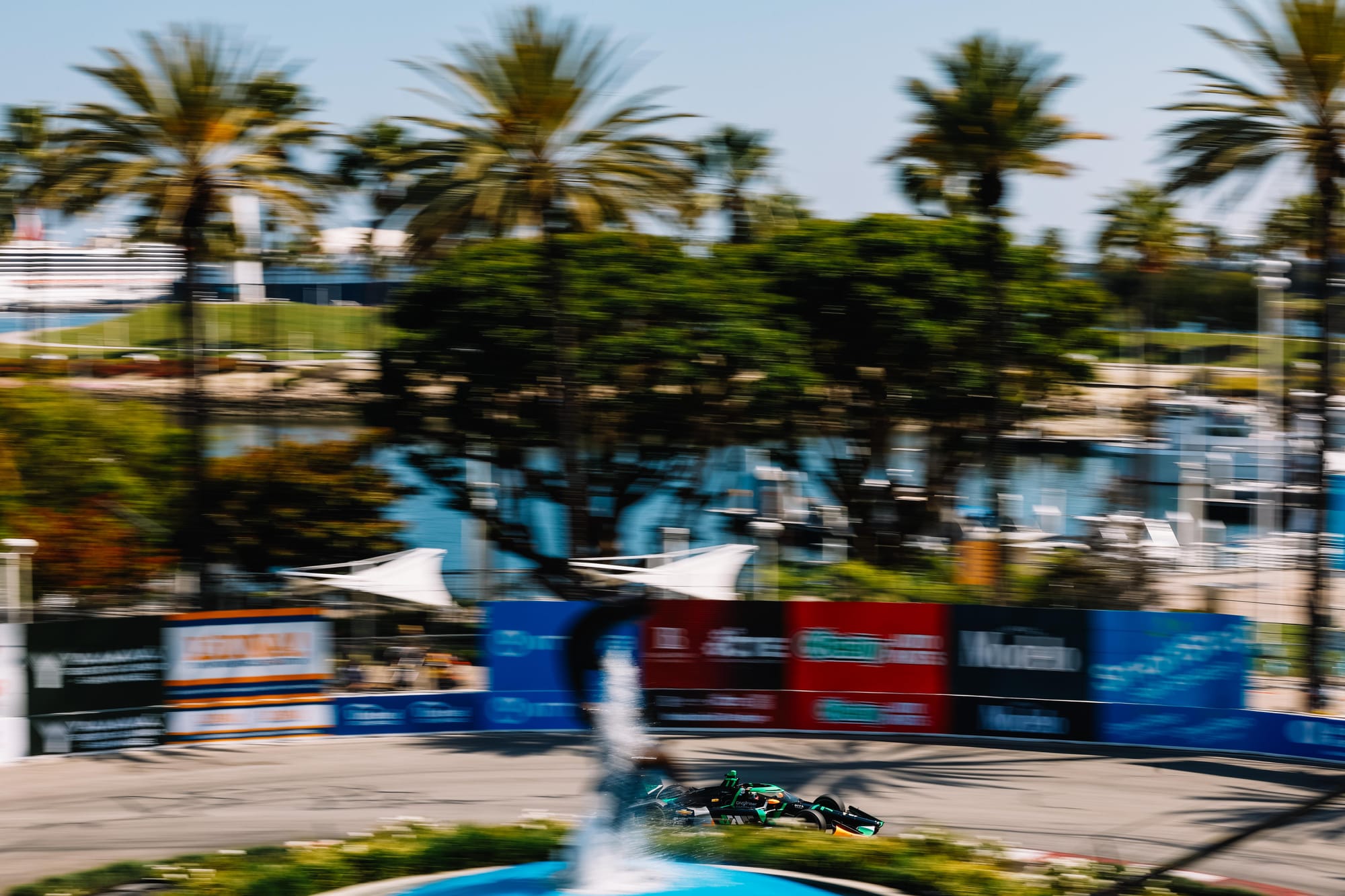
He sits 13th in the points, interestingly in the exact position he finished the last two years with Andretti.
It's too soon to judge this stint yet, but there aren't the same expectations on him here as at Andretti - for whom his ex-team-mate Colton Herta now leads the points.
But Grosjean will be expected to score some giantkilling results when the car is in the window, and solid midfield points when it isn't.
